Table of contents
Challah or jalá is a braided bread of Jewish origin that is consumed on Shabbat and other Jewish religious celebrations. But its popularity has transcended borders and has already conquered half the world. Texture similar to a brioche, is a slightly sweet bread dough (but usually accompanied by salty) to which a braid form .
The original recipe of challah It does not contain milk or butter, and is made with flour, water, yeast, sugar, salt and eggs. And it is that each ingredient has a meaning The egg as a vital circle, the flour separates good and evil, the yeast makes happiness grow, the water envelops everything, the sugar sweetens life, the salt, in its measure as constructive criticism and the oil to flow productivity.
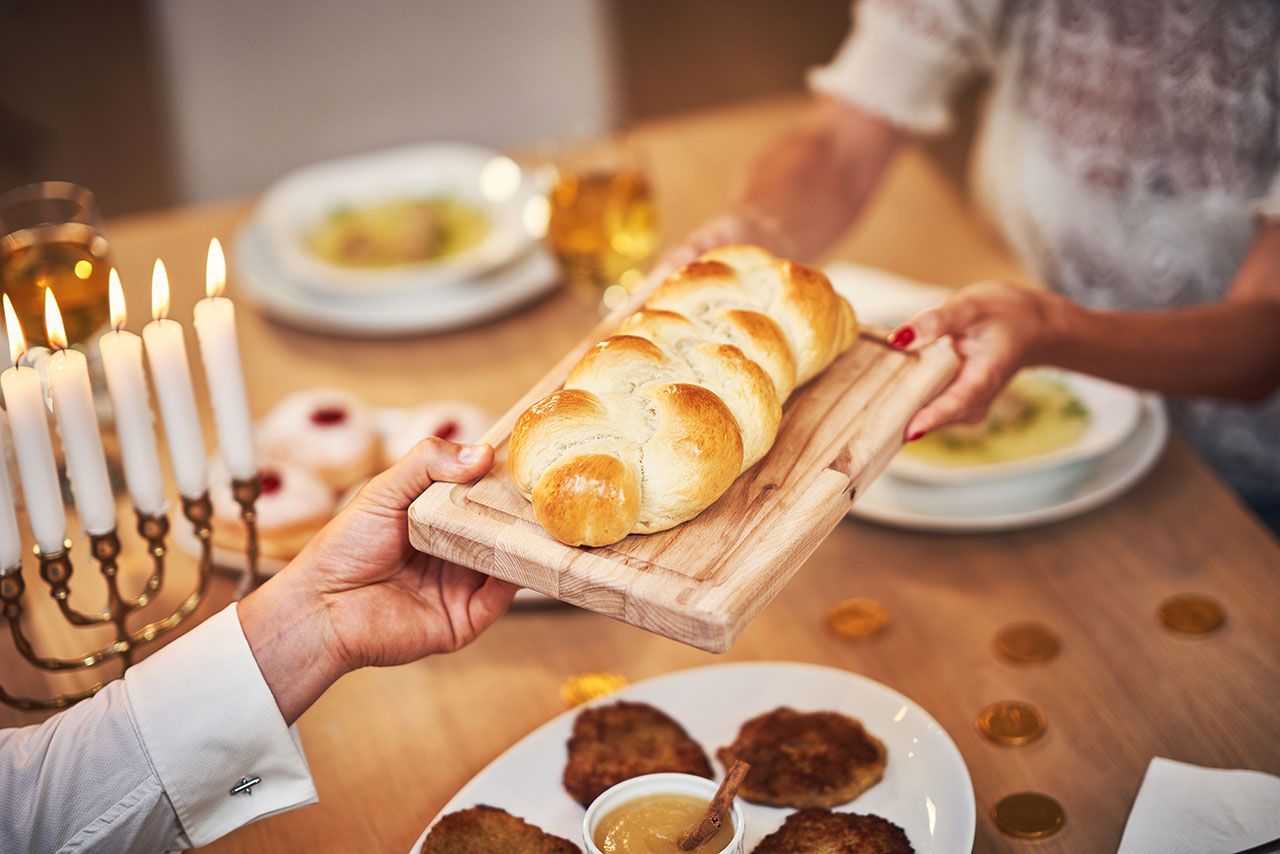
Challah bread is a traditional braided bread consumed in Jewish religious celebrations.
There are versions The white flour can also be replaced with spelt flour, whole wheat flour or oat flour.
Here we show you step by step how to make the traditional Jewish braided bread Take note!
Ingredients (1 large loaf)
- 120 ml of lukewarm water (10 tablespoons)
- 3 g dry baker's yeast
- 400 g loose wheat flour
- 50 g white sugar (4 tablespoons)
- 2 teaspoons salt
- 2 eggs and 1 yolk
- 60 ml of mild olive oil (4 tablespoons)
- 1 egg white + 1 tablespoon of water (for painting)
Preparation of the sweet braided bread dough
In a small bowl dissolve 1 teaspoon of the sugar in warm water, add the yeast and let stand for 10 minutes until a foam forms.
In a large bowl Mix the flour, the rest of the sugar and the salt. Make a hole in the center like a volcano and add the eggs (2 whole eggs and 1 yolk) and the oil. Mix until the dough is homogeneous, add the yeast and mix.
On a floured surface Knead the mixture for 10 minutes until you get an elastic texture that comes off your hands. You can add a little more flour during kneading if necessary, keeping in mind that it should be a soft ball of dough.
Place the ball of dough in a large bowl greased with oil, cover with plastic wrap and let stand in a warm place for 1.5-2 hours until doubled in volume.
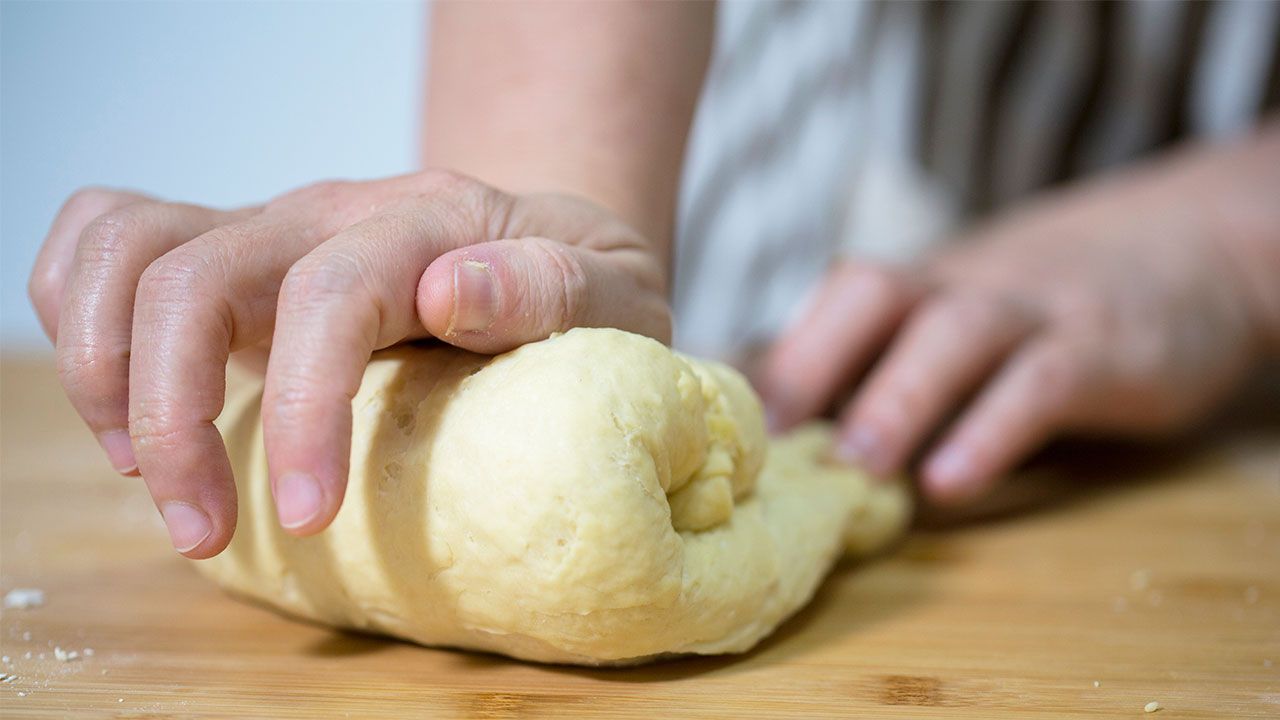
To make the braiding of the bread
To degas the dough Place the ball on a floured surface and press it with your hands from the inside out. Let it rest for 10 minutes covered with a clean, dry cotton cloth.
Divide the dough into 4 parts and give it an elongated shape with your hands.
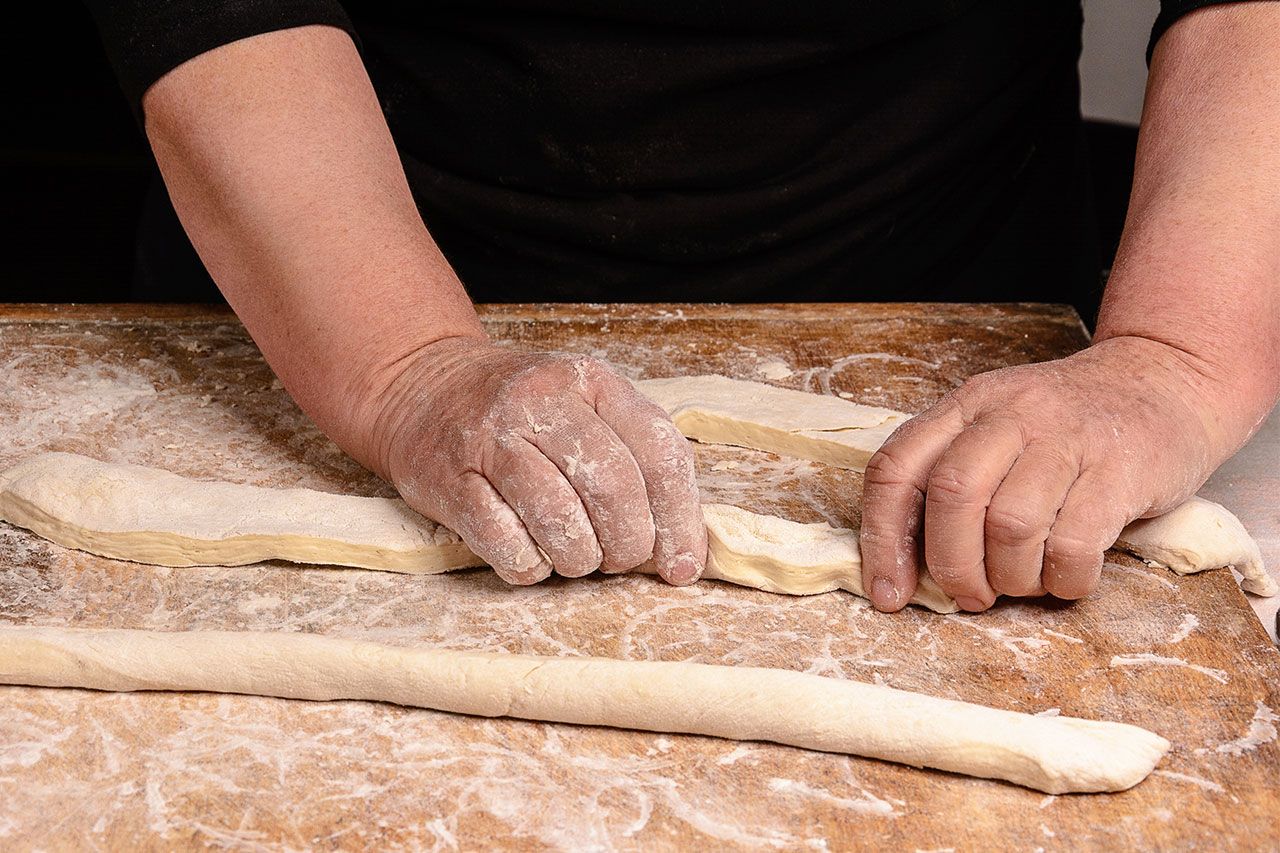
To form a braid of 4 strands place the strips of dough in parallel and join with your fingers at one end.
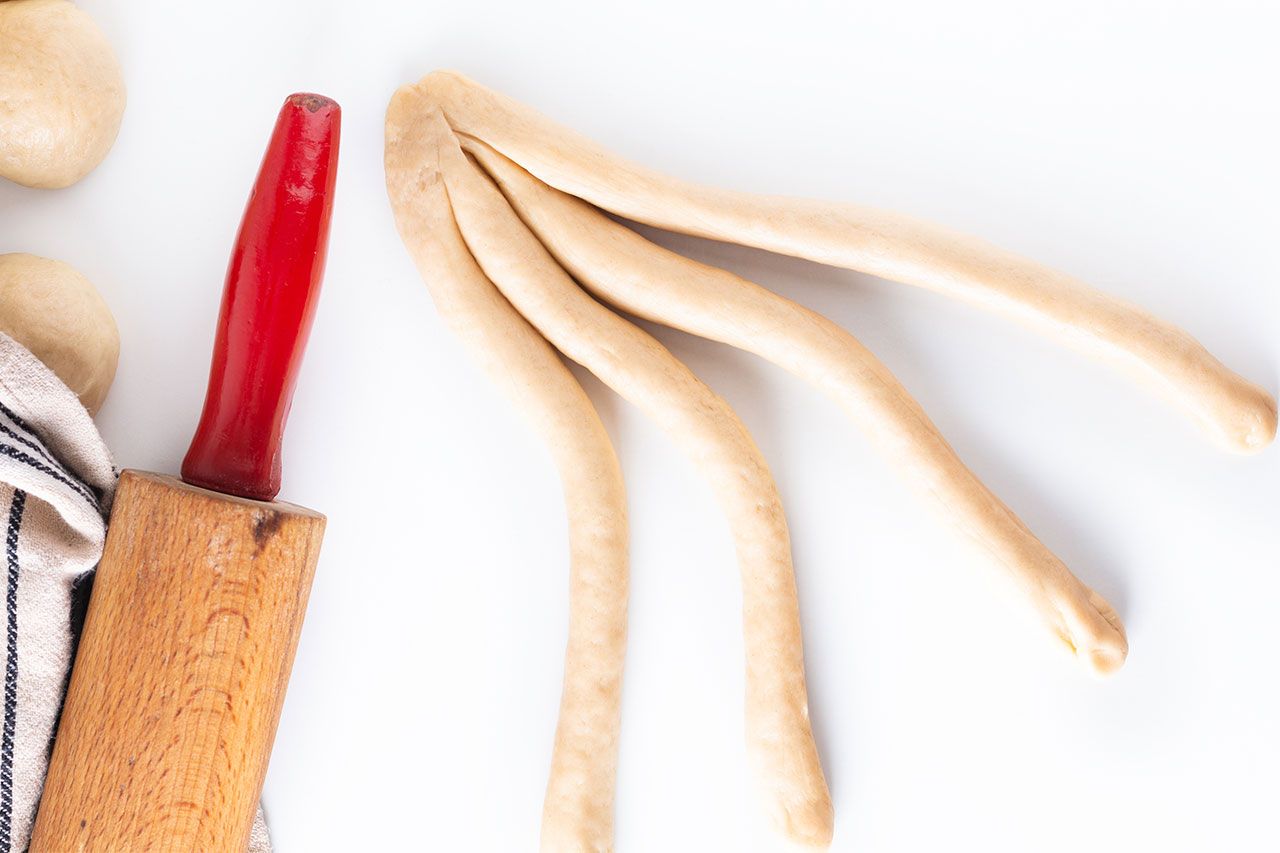
Braid the strands with your fingers to the end and seal the other end with your fingers.
The braid should be left with the ends joined together but loosely The dough should be loose as it needs space during rising and baking.
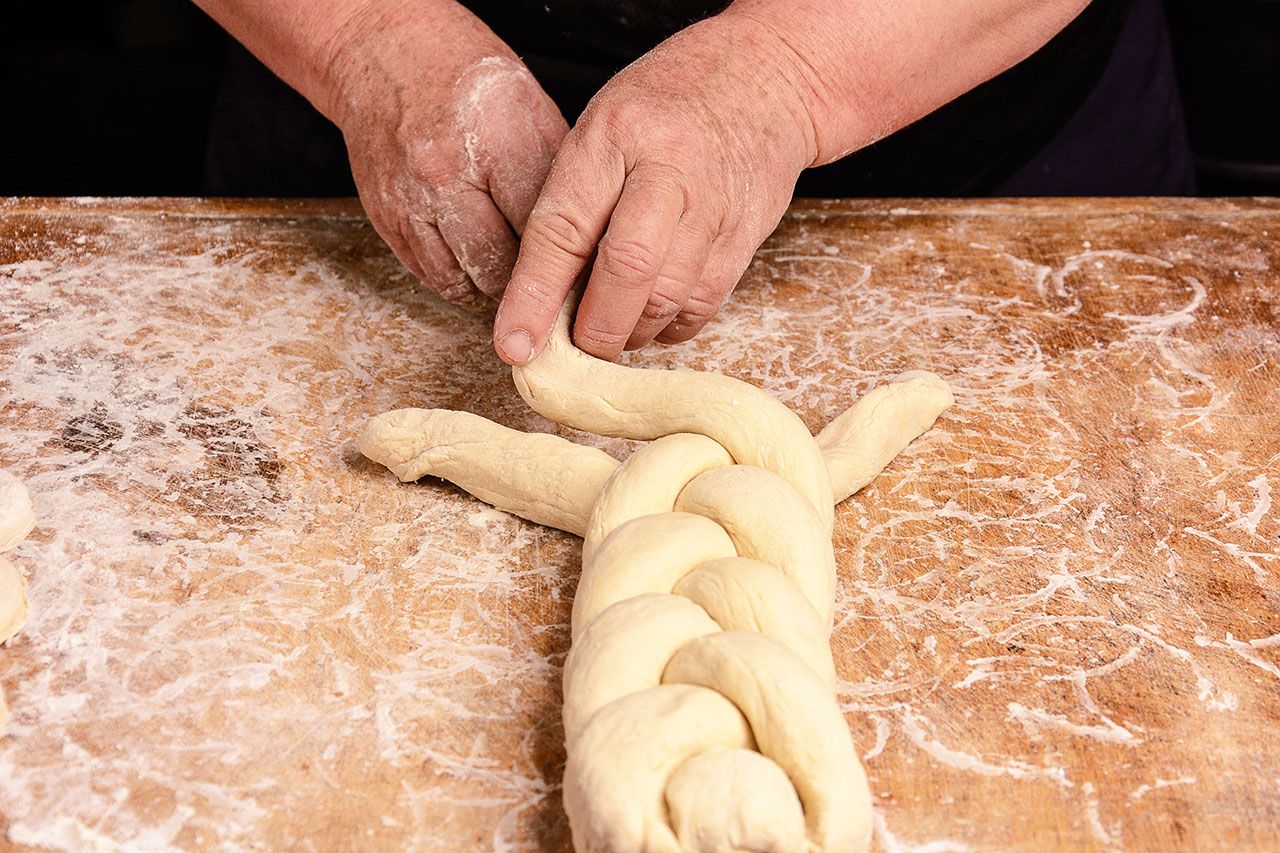
Cover with a kitchen towel and let rise in a warm place for 1 hour until doubled in volume.
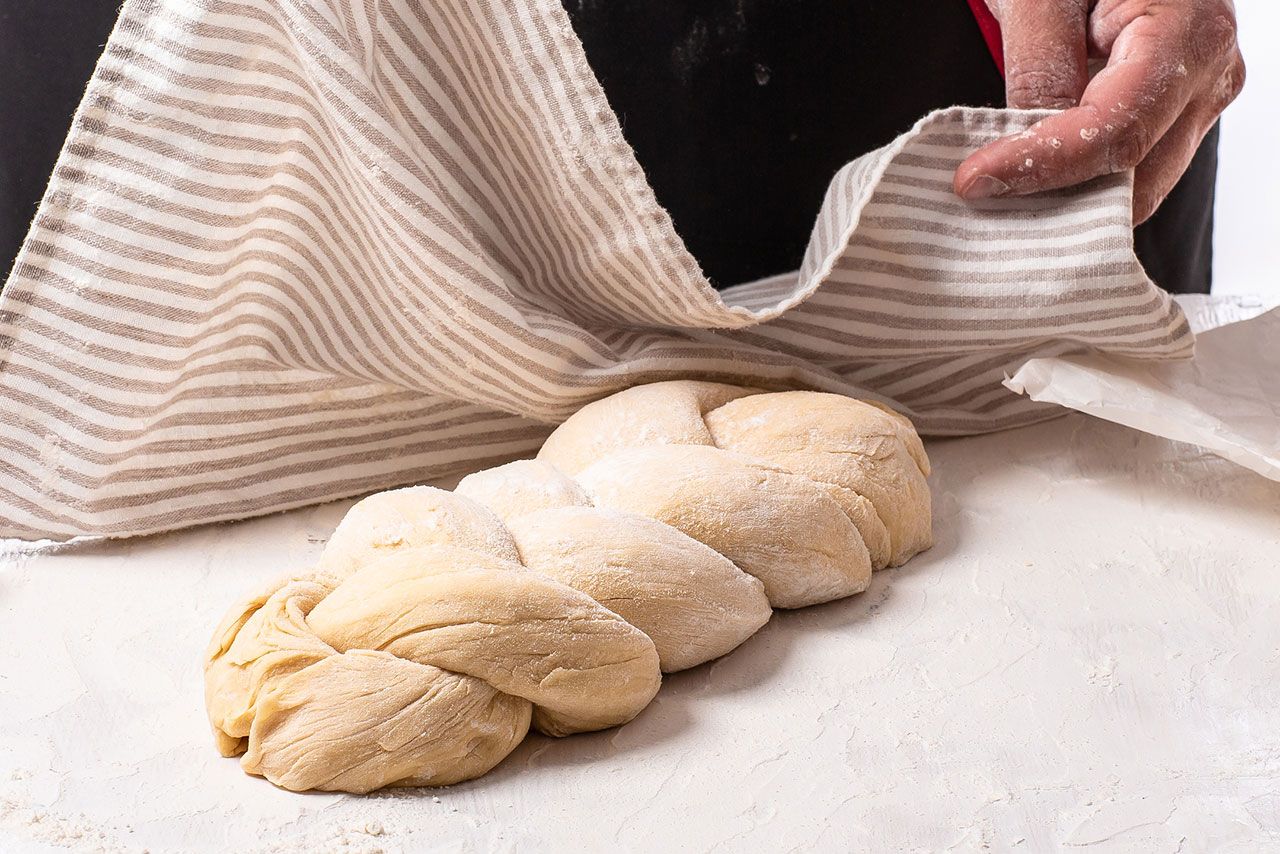
Place the braided dough on a baking sheet covered with parchment paper.

Paint the surface of the bread with a pastry brush and a mixture of egg beaten with a little water.
Optionally braided bread can be cover with seeds poppy seed and black sesame seeds before baking.

Put in the oven preheated at 180ºC at medium height for 30 minutes until the bread is golden brown.

Remove the tray from the oven and allow the braided bread to cool before serving.

How to accompany the jalé or Challah Bread?
Challah bread or Challah although it has sugar in the dough, it is not very sweet, so originally it is usually served with salty foods such as meats. But you can adapt it to your taste and serve it with ham and cheese, hummus or whatever ingredients you like best. Delicious!


